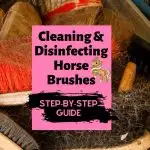Cleaning and disinfecting horse brushes are things that every horse owner is going to have to do at some point. Brushes get dirty and horses get sick. Luckily, the process to both clean and disinfect horse brushes is pretty straight forward however you do want to take into account whether the brush is natural bristle or synthetic. Let’s take a look at how to clean your horse brushes.
Table of Contents
Supplies Needed
Cleaning your horse brushes is a fairly simple procedure. Your best bet is to use Dawn dish detergent.
I like Dawn for two reasons:
- It cuts grease and oils nicely
- It’s the preferred detergent/cleaner for animals when there is an oil spill (source) which means if you do leave any residue, it isn’t too likely to hurt your horse.
You can use any soap you have on hand if need be. You could even use your favorite horse shampoo.
You will also need a large bucket. The size of bucket you use will be entirely dependent on how many brushes you need to clean.
If you have a ton of brushes to clean, you could use a large horse waterer as your “bucket”. If I have a lot of brushes to clean, I’ll use my blue barrel waterers like these:
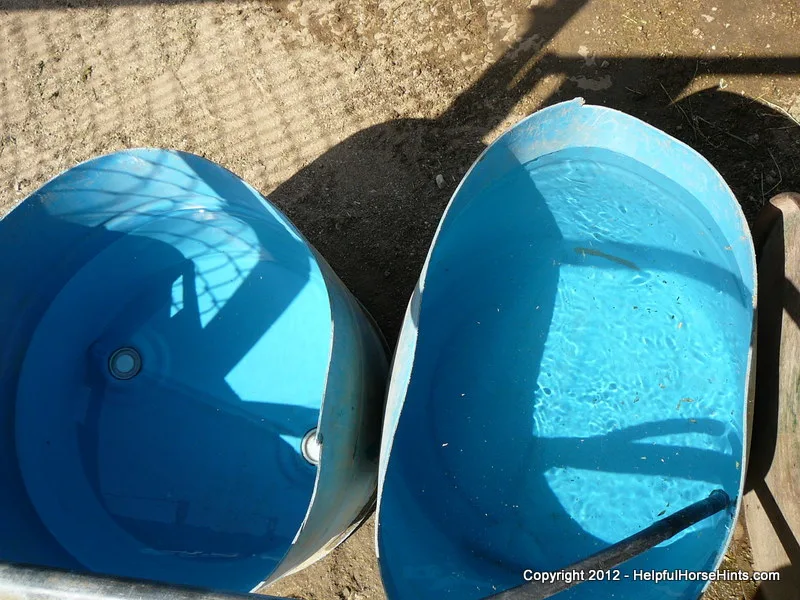
Methods for Cleaning Synthetic Horse Brushes
- Remove as much dirt and loose hair from your brushes as possible. You can do this by brushing them on a hard surface, brushing them together, or using a curry comb to remove excess hair.
- Make soapy water in your bucket of choice. Warm water may help any grease and oils in the brush come off more quickly.
- Rinse your brushes first. Why get your bucket all nasty if you can get some more loose hair and dirt off with the hose. I typically rinse brushes one by one with the hose and separate bristles with my fingers before adding to the bucket water. You could skip this step if you wanted.
- Add brushes to the bucket. I like to agitate the bristles along the bottom or side of the bucket to be sure the brush gets thoroughly wet.
- Let sit for at least 15 minutes.
- Agitate again and then rinse thoroughly. You want to be sure to remove ALL soap residue.
- Leave to dry in the sun on a clean surface. I usually stand my brushes up on the bristles to help them dry straight. Once the bristles are dry I usually lay my brushes on their back for several hours in the sun to allow the wood to thoroughly dry.
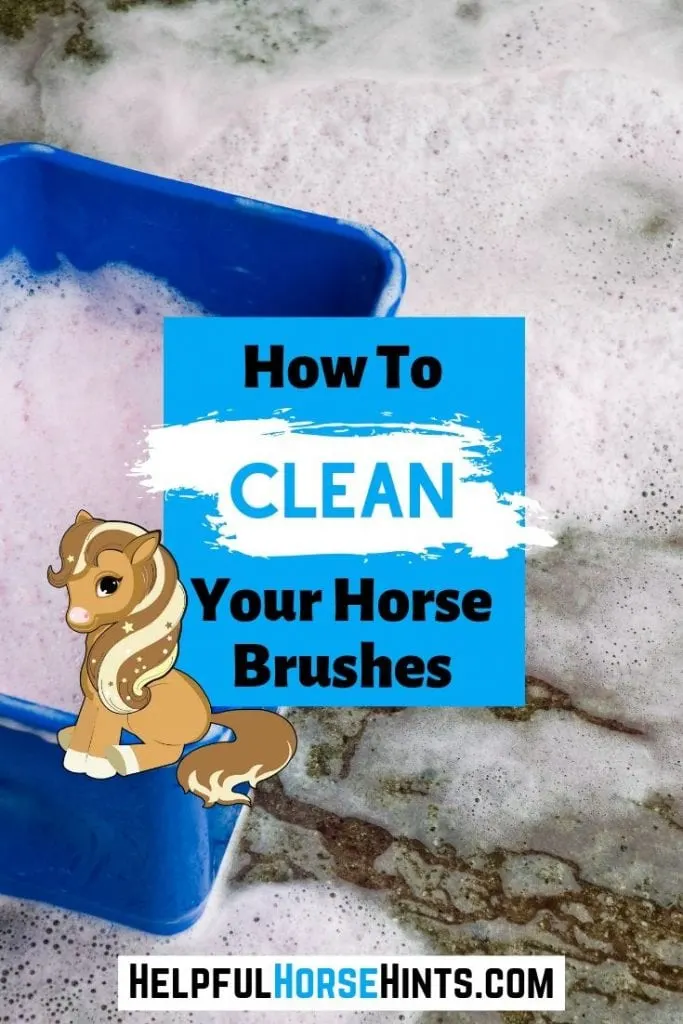
Cleaning Natural Bristle Brushes
Natural bristle brushes are more sensitive to being soaked for long periods of time. The wood and bristles are more easily damaged.
To wash my natural bristle brushes (like my horsehair finishing brush) I do the following:
- Remove as much hair and dirt from brush as possible.
- Rinse with clear water.
- Add horse shampoo or Dawn dish detergent and work through bristles.
- Thoroughly rinse until water runs clear.
- Shampoo again if bristles were especially dirty.
- Set out to dry as above.
You will note that we didn’t submerge the bristles in this case. The brush will still be clean but you have minimized the amount of water coming into contact with the base of the brush.
How Often to Clean Horse Brushes
Cleaning horse brushes can be done routinely. How often to clean them will depend on how many horses you groom and how often a particular set of brushes are used.
At a large stable, you may want to consider cleaning brushes as often as once a month. Conversely, if you are only grooming your one horse, twice a year should be more than sufficient.
Disinfecting Horse Brushes
Disinfecting horse brushes are different from washing them. Your reasons may vary. Maybe you had a horse with girth itch or a horse that contracted strangles.
Whatever the case may be, disinfecting brushes is a process that needs to be done at most stables. There are a variety of different solutions you can make depending on what you have on hand.
Keep in mind that disinfecting should be done after you thoroughly clean the brushes. Some disinfectants, especially bleach, react with dish soap to produce a toxic gas and should not be used together.
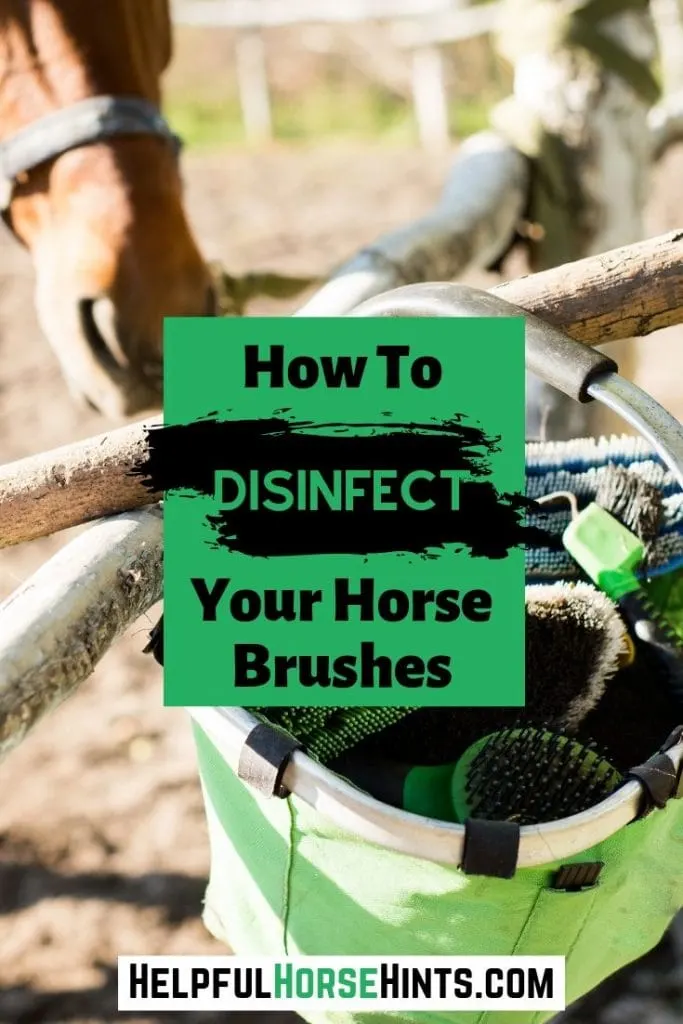
Bleach Horse Brush Disinfectant
Bleach is the most commonly used disinfectant when it comes to horse brushes.
Keep in mind that it is best used on synthetic brushes and while it can be used on nature brushes, overuse will dry the bristles out.
Bleach can be mixed in a ratio of 1/4 cup to 3/4 cup (maximum) of bleach per gallon of water. Remember that bleach is a skin irritant and you should absolutely wear gloves while disinfecting brushes and handling bleach.
In the case of bleach, you can use just cool hose water. Warm water is not necessary. Submerge your brushes for at least 2 minutes. I usually submerge for 10 minutes to be safe.
Rinse brushes thoroughly to remove bleach residue and allow them to dry.
Lysol Horse Brush Disinfectant
Lysol is another great disinfectant. While you may know of it as a spray, you will want to look for the liquid concentrate.
Follow the package directions for making the disinfectant solution. This is typically 2 1/2 tablespoons concentrate per gallon of warm water.
You should let the solution be in contact with the brush for no less than 10 minutes but I usually leave mine for at least 30 minutes.
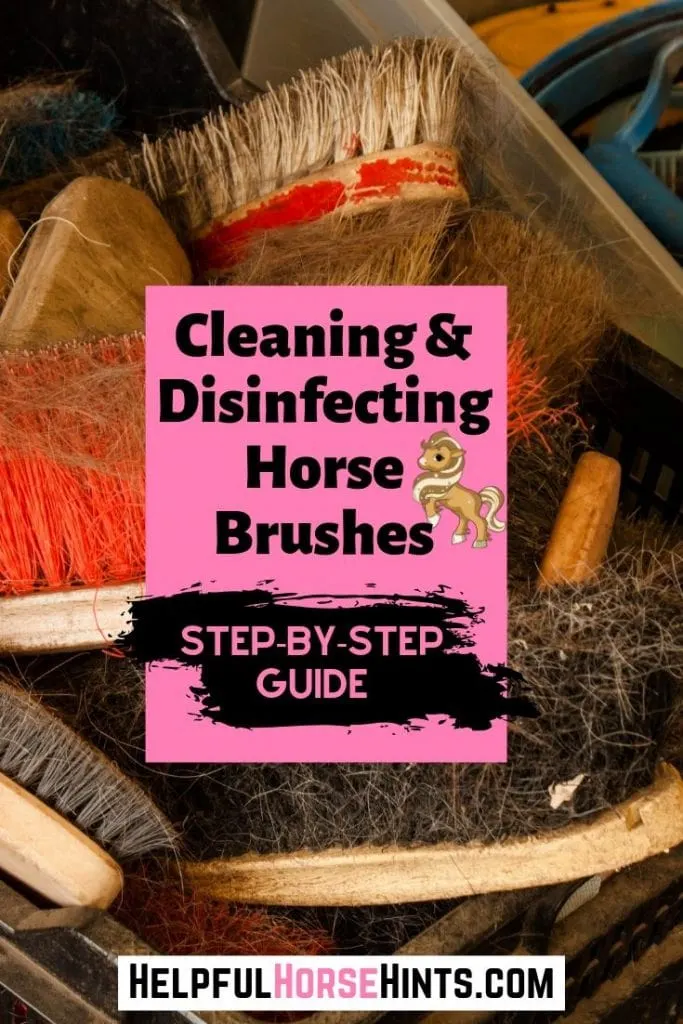
Disinfecting Natural Bristle Brushes
Keep in mind that bleach and other disinfectants can be especially drying to natural bristle brushes AND we don’t typically like to submerge natural brushes. A best practice is to only use synthetic brushes on sick horses or those with skin conditions.
If you do need to disinfect your natural bristle brushes, consider the reason for disinfecting and use that to make a decision on the best way to disinfect.
If this is just a precautionary disinfecting, you may just want to spray or dip the bristles into a disinfectant solution without contacting the wood base.
If you do need the brush thoroughly disinfected because it came into contact with an infectious horse, you could employ the soaking methods above but keep in mind that could damage the brush.
That being said, it is typically cheaper to replace a brush that is damaged during the disinfecting process than to treat another sick horse.
Final Thoughts
Cleaning and disinfecting horse brushes is an easy enough task that should be worked into your normal stable routine at least once every year if not every six months. It is also something that can be done whenever the need arises such as when grooming equipment has been used on a sick horse.
Related Posts
- 10 Essential Grooming Supplies for Every Horse Owner
- 5 Best Horse Grooming Aprons
- DIY Hand Painted Grooming Brushes

